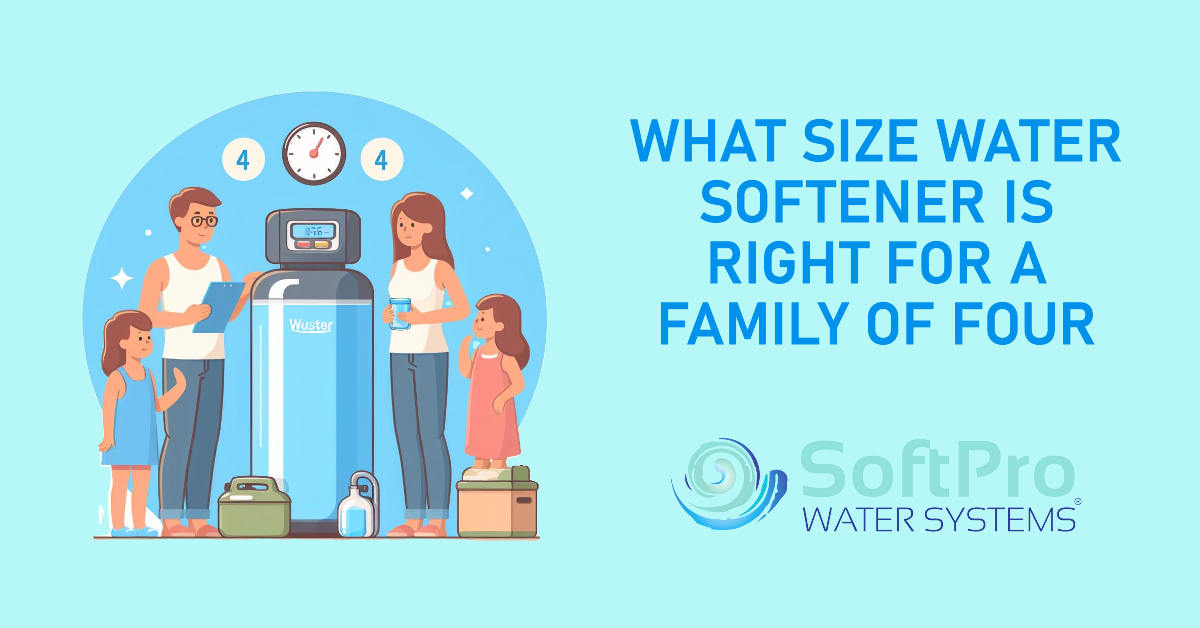SoftPro vs 3M: Performance, Features, Tech, Cost Comparison
Table of Contents
Understanding Hard Water
Symptoms of Hard Water
Hard water, the silent nemesis of efficient plumbing and sparkling dishes, arises from high mineral content, primarily calcium and magnesium. These minerals, dissolved in groundwater, leave behind deposits called scale as the water evaporates. This scale buildup is the culprit behind numerous household woes:
- Clogged pipes and appliances: Scale restricts water flow, reducing appliance efficiency and ultimately leading to costly repairs.
- Soap scum and film: Hard water reacts with soap, leaving behind an unsightly film on dishes, clothes, and surfaces.
- Dry skin and hair: Mineral buildup can strip natural oils from skin and hair, causing dryness and irritation.
- Faded fabrics and colors: Hard water can dull the vibrancy of textiles and affect cleaning efficacy.
Methods for Testing Your Home's Water Hardness
Before embarking on your softening journey, it's crucial to assess the severity of your hard water problem. Here are some simple methods:
- Soap test: Fill a glass with water and add a few drops of liquid soap. If minimal suds form, your water is likely hard.
- Feel the flow: Hard water often feels slippery despite minimal lather.
- Look for telltale signs: White scale buildup on faucets, appliances, and shower doors are telltale signs.
- Home water testing kits: These readily available kits offer a more accurate measurement of water hardness levels.
Impacts of Hard Water on Appliances and Plumbing
The consequences of hard water extend beyond aesthetic annoyances. Scale buildup can lead to:
- Reduced appliance lifespan: Clogged pipes and heating elements shorten the life of washing machines, dishwashers, and water heaters.
- Increased energy consumption: Appliances have to work harder to overcome scale buildup, leading to higher energy bills.
- Plumbing damage: Persistent scale buildup can eventually lead to pipe corrosion and leaks.
Understanding the detrimental effects of hard water empowers you to choose the right solution for your home. In the next section, we'll delve into the capabilities of two leading water softener brands: SoftPro and 3M.
SoftPro vs 3M
Brand Reputation and Expertise: Choosing Your Ally in the Battle Against Hard Water
Both SoftPro and 3M boast established reputations in the water treatment industry. SoftPro, with over 25 years of experience, prioritizes innovation and user-friendly systems. 3M, a global leader in diverse industries, leverages its expansive research and development to deliver high-performance water softeners.
Customer Satisfaction and User Reviews: Analyzing user reviews reveals a high level of satisfaction for both brands. SoftPro receives praise for its ease of use and customer service, while 3M users commend its durability and advanced features. Ultimately, the choice depends on your individual priorities and budget.
Certifications and Accolades: Both brands possess industry certifications like NSF International for water quality and WQA Gold Seal for performance. However, 3M holds additional certifications for specific technologies like lead and chlorine reduction, catering to wider water concerns.
Performance Prowess
Efficiency Edge: Minimizing Water and Salt Consumption for Optimal Value
Efficiency is key in choosing the right water softener. Here's how SoftPro and 3M stack up:
- Grain Capacity: SoftPro systems typically offer higher grain capacity (indicating mineral removal capability) per unit size, ideal for larger households with high water usage. 3M models tend to have smaller capacities but boast superior efficiency in regenerating with less water and salt.
- Regeneration Cycle: SoftPro's regeneration cycles are generally longer but require less frequent activation, potentially saving water in the long run. 3M's shorter, more frequent cycles minimize water waste during each regeneration but may lead to slightly higher overall water consumption.
Smart Features for Optimized Performance
Both brands offer advanced features for convenience and efficiency:
- SoftPro: Wi-Fi connectivity allows remote monitoring and control, while leak detection and automatic bypass valves add safety and peace of mind.
- 3M: Advanced filtration options like chlorine and sediment removal provide broader water treatment, and intuitive touch controls simplify user interaction.
Debunking Myths and Clarifying Features
Remember, not all features are created equal:
- High grain capacity alone doesn't guarantee efficiency: Consider regeneration frequency and water/salt usage for a complete picture.
- Smart features come at a cost: Evaluate your need for advanced functionalities before paying for extras you might not utilize.
Feature and Technology
Beyond Mineral Removal: Additional Contaminant Filtration Capabilities
While both brands excel at hard water softening, they differ in additional filtration options:
- SoftPro: Focuses primarily on hard water removal, but some models offer sediment filtration for basic particulate removal.
- 3M: Offers a wider range of advanced filtration options including chlorine, sediment, lead, and even arsenic removal, catering to homes with diverse water concerns.
Advanced Features for User Convenience
Modern water softeners boast user-friendly features to enhance experience:
- Digital Displays: Both brands offer clear displays for monitoring water usage, system status, and regeneration cycles.
- Touch Controls: 3M systems prioritize intuitive touch controls for easy operation, while SoftPro may require button navigation on some models.
- Mobile App Integration: Select SoftPro models offer mobile app integration for remote monitoring and control, a feature currently unavailable with 3M softeners.
Selecting the Right Features for Your Needs
Prioritize features based on your specific water concerns and lifestyle:
- Hard water alone: If hard water is your primary concern, either brand's basic softening system will suffice.
- Multiple contaminants: Consider 3M's advanced filtration options if your water has additional contaminants or you desire broader water treatment.
- Remote monitoring: Choose SoftPro with mobile app integration if remote control and access are important to you.
Cost Considerations: Balancing Budget with Benefits
Upfront Investment: Price Tags for Soft Water
The cost of a water softener varies based on size, capacity, features, and brand. Generally:
- SoftPro: Offers a wider range of price points, with basic models starting at around $400 and advanced models reaching $1,200 or more.
- 3M: Tends to have a slightly higher price point on average, with basic models starting around $500 and advanced models exceeding $1,500.
Remember, price isn't the only factor to consider. Factors like long-term operating costs (water and salt usage) and potential appliance lifespan savings can influence the overall value proposition.
Beyond the Purchase Price: Investigating Hidden Costs
Installation costs can add a significant chunk to the overall expense. Both brands offer:
- DIY installation: This is the most budget-friendly option but requires plumbing knowledge and technical expertise.
- Professional installation: Recommended for complex systems or those lacking DIY skills. Costs typically range between $150 and $300, depending on location and complexity.
Additionally, consider warranty terms and service contracts:
- Warranties: Both brands offer standard warranties of around 5-10 years on parts and labor. Extended warranties are available for purchase.
- Service contracts: Optional service contracts can provide regular maintenance and discounted repair services for added peace of mind.
Long-Term Operating Costs: Water and Salt Usage
While upfront costs are important, long-term operating costs can significantly impact your budget. Consider:
- Water usage: 3M's generally shorter regeneration cycles may lead to slightly higher water consumption compared to SoftPro's less frequent but longer cycles.
- Salt usage: 3M systems tend to be more efficient in salt usage during regeneration, potentially leading to lower salt costs over time.
Calculate the estimated annual water and salt costs based on your household water usage and chosen system's specifications to compare long-term expenses.
Matching Your Needs: Finding the Perfect Water Softener Fit
Choosing the right water softener is a personal decision based on your unique needs and priorities. Consider these factors:
Home Size and Water Demands
- Small household with moderate water usage: Consider a compact and efficient system like a 3M EcoSoft or a SoftPro 32,000-grain capacity model.
- Large family with high water demands: Opt for a larger capacity system like a SoftPro 56,000-grain model or a 3M AquaSoft Elite with advanced efficiency features.
Whole-House vs. Point-of-Use: Sizing Up
- Whole-house softening: Treats all water entering your home, ideal for hard water throughout the house and protecting appliances. Both brands offer whole-house systems.
- Point-of-use softening: Treats water at specific taps, suitable for specific applications like drinking or showering. 3M offers under-sink and showerhead filtration systems.
DIY vs. Professional Installation
- DIY installation: Saves money but requires technical skills and familiarity with plumbing systems. SoftPro systems tend to be more DIY-friendly with detailed instructions.
- Professional installation: Recommended for complex systems, warranty protection, and peace of mind. Both brands offer professional installation services.
Remember, there's no one-size-fits-all solution. Research, compare specifications, and seek expert advice if needed to find the perfect water softener for your home.
Alternative Strategies for Soft Water
While traditional water softeners are powerful weapons against hard water, alternative solutions exist for specific needs and considerations. Let's explore some additional options:
Eco-Friendly Options for Soft Water
Salt-free water softeners, like template-assisted crystallization (TAC) systems, offer an eco-friendly alternative by using physical processes instead of salt to reduce scale formation. They are:
- More environmentally friendly: Eliminate salt discharge into wastewater, a concern with traditional softeners.
- Lower operating costs: No salt purchase required, potentially saving money over the long run.
- Less maintenance: No regeneration cycles needed, simplifying upkeep.
However, they also have limitations:
- Lower effectiveness: May not be as efficient as traditional softeners in removing hard water minerals, especially in high-hardness areas.
- Higher upfront cost: Initial purchase price can be higher than traditional systems.
- Limited suitability: Not ideal for all water types or homes with significant iron or manganese levels.
Pre-Filtration and Well Water Solutions
Pre-filtration systems like sediment filters can address additional water concerns like particulate matter before the softener tackles hardness. This can improve overall system efficiency and lifespan.
For homes with well water, specific water softeners designed for well water conditions are crucial. These systems often include additional filtration stages to address common well water contaminants like iron and bacteria.
Consulting a Water Treatment Professional
Choosing the right water treatment solution can be complex. Consulting a qualified water treatment professional can provide valuable insights and recommendations tailored to your specific water conditions, budget, and needs. They can assess:
- Water quality testing: Analyze your water's hardness level and presence of other contaminants.
- System suitability: Recommend the most effective and efficient solution for your water challenges.
- Installation and maintenance guidance: Provide expert assistance with installation and ongoing maintenance.
Remember, the best approach is to consider all available options and seek expert advice if necessary to find the most effective and sustainable solution for your water needs.
Evaluating Choices for Your Unique Water Needs
Now that you're armed with a comprehensive understanding of SoftPro and 3M water softeners, along with alternative options, it's time to declare the victor for your unique battle against hard water. Here's a summary of key decision points:
Prioritizing Performance and Efficiency
- SoftPro: Wins in grain capacity per unit size, ideal for high-water-usage households. Its longer regeneration cycles offer potential long-term water savings.
- 3M: Reigns supreme in regeneration efficiency, minimizing water and salt usage per cycle. Advanced features like sediment and chlorine removal cater to broader water concerns.
Seeking User Convenience and Advanced Features
- SoftPro: Mobile app integration and leak detection offer remote monitoring and peace of mind.
- 3M: Intuitive touch controls and diverse filtration options simplify user interaction and address various water contaminants.
Balancing Budget and Value
- SoftPro: Offers a wider range of price points, making it potentially more budget-friendly.
- 3M: Higher initial cost but potentially lower long-term operating costs with efficient salt usage. Consider warranty terms and service contracts for additional cost analysis.
Matching Your Specific Needs
- Home size and water demands: Choose a capacity that aligns with your usage.
- Whole-house vs. point-of-use: Consider treating all water or specific taps based on your needs.
- DIY vs. professional installation: Assess your skills and budget for installation preferences.
Remember:
- There's no single "best" choice. Carefully evaluate your priorities, water conditions, and budget to identify the perfect fit.
- Don't hesitate to seek expert advice from a qualified water treatment professional for personalized recommendations.
Final Thoughts
Conquering hard water is just the first step to enjoying sparkling dishes, soft skin, and protected appliances. Here are some essential tips for maintaining your water softener and maximizing its lifespan:
Proper Installation and Maintenance
- Follow the manufacturer's installation instructions precisely for optimal performance and warranty protection.
- Schedule regular maintenance, typically including salt refilling and system cleaning, according to the recommended frequency.
- Monitor water usage and system performance to identify potential issues early on.
Resources for Troubleshooting and Support
- Both SoftPro and 3M offer user manuals, troubleshooting guides, and online support resources to address common issues.
- Consider contacting the manufacturer's customer service for personalized assistance if needed.
- Utilize online forums and communities to connect with other water softener users and exchange experiences and tips.
Sustainable Water Usage Habits
- Opt for water-efficient appliances and practices to minimize overall water consumption.
- Utilize features like leak detection and bypass valves to prevent water waste in case of malfunctions.
- Consider eco-friendly alternatives like salt-free softeners when suitable for your water conditions.
Remember:
- Maintaining your water softener is crucial for long-term performance and cost-effectiveness.
- Proactive care and troubleshooting can prevent expensive repairs and ensure ongoing water softening bliss.
- Sustainable water usage habits benefit not only your home but also the environment.
By following these tips and carefully choosing the right water softener for your needs, you can enjoy the comfort and benefits of soft water for years to come. Remember, this journey is about more than just comparing brands; it's about embracing water wisdom and making informed choices for a sustainable and healthy home environment.
You can also read more articles about SoftPro compared to other brands, including SoftPro Whirlpool ComparisonSoftPro Kinetico Comparison: Discover how SoftPro measures up against Kinetico in terms of performance and features.SoftPro Whirlpool Comparison: Discover how SoftPro stacks up against Whirlpool in our detailed analysis.SoftPro EcoWater Comparison: Discover how SoftPro measures up against EcoWater systems.SoftPro vs PentairSoftPro EcoWater Comparison: Discover how SoftPro measures up against EcoWater systems.SoftPro Whirlpool Comparison provides insights into how SoftPro stands against Whirlpool in water softening solutions.SoftPro Kinetico Comparison: Discover how SoftPro stacks up against Kinetico in our detailed analysis.SoftPro Whirlpool Comparison highlights the differences and advantages of SoftPro over Whirlpool water softeners. and SoftPro vs RainSoft comparisonSoftPro EcoWater Comparison: Discover how SoftPro stacks up against EcoWater systems.Discover the key differences in the SoftPro Pentair comparison.SoftPro 3M Comparison: Discover how SoftPro stacks up against 3M water softeners.SoftPro vs A. O. SmithExplore the SoftPro 3M comparison for insights on how these brands stack up against each other.SoftPro Pentair Comparison: Discover how SoftPro stacks up against Pentair in our detailed analysis.Explore our SoftPro EcoWater comparison to see how we stack up against EcoWater systems.Explore our detailed SoftPro RainSoft comparison to understand the advantages of choosing SoftPro over RainSoft..




![SoftPro Chlorine+ Carbon Whole House Water Filter to Remove PFAS, Chlorine, Chloramine & Pesticides [City Water Filters Series]](http://www.softprowatersystems.com/cdn/shop/products/softpro-whole-house-chlorine-filter-282008.jpg?v=1758858973&width=140)
![SoftPro Iron Filter - Iron Master AIO - Best Iron Filter for Well Water [Air Injected Water Filter / Katalox]](http://www.softprowatersystems.com/cdn/shop/products/softpro-iron-master-aio-water-filtration-system-remove-iron-sulfur-manganese-using-air-injection-for-optimal-performance-412868.jpg?v=1758859831&width=140)













